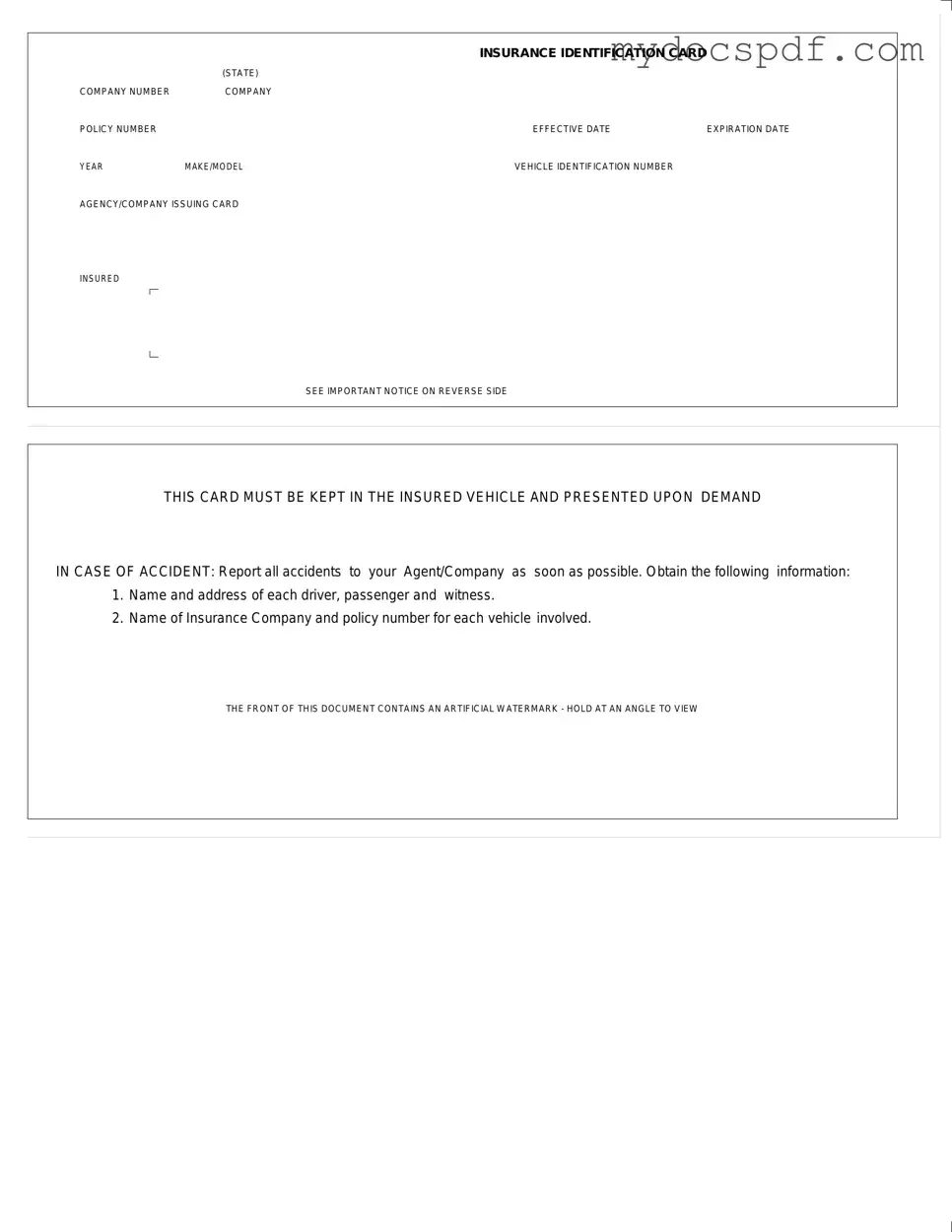Get Auto Insurance Card Form in PDF
The Auto Insurance Card is a vital document that provides proof of insurance coverage for a vehicle. This card includes essential information such as the policy number, effective dates, and vehicle details. It is important to keep this card in the insured vehicle and present it when requested, particularly in the event of an accident.
Access Editor Here

